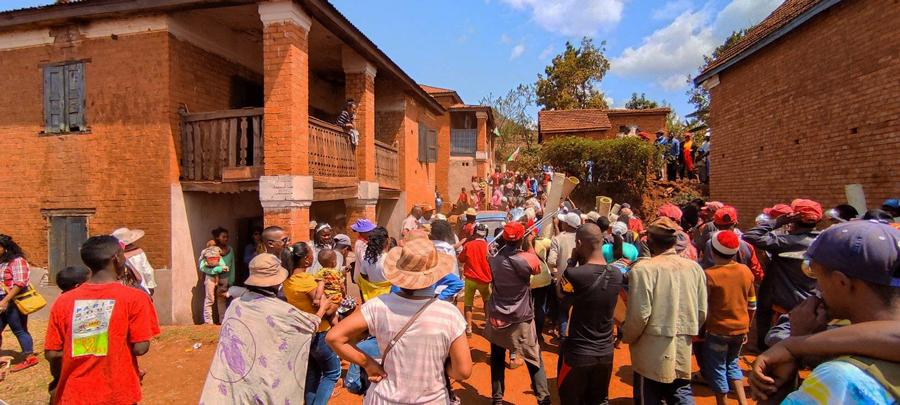The famadihana or literally turning over the dead, one of the cultural manifestations of Madagascar.
Exhumation of the bodies of dead ancestors, or famadihana, is a tradition in Madagascar in specific regions. This ceremony consists of turning over the dead to wrap them in new shrouds. One of the cultural values of the Malagasy people, the famadihana is practiced at key moments of the year and is a way to celebrate life and death, as well as a moment of gathering for families and local communities.
But what is really the famadihana and what region practices it?
The tradition of famadihana has considerable support in terms of culture, religion and society in Madagascar. Honoring the traditional Malagasy religion is manifested through this ceremony. From a social point of view, notice that it constitutes the moment of gathering for the family and for the local community. In sum, the famadihana characterizes a means of maintaining the links between the dead and the living, and of preserving the family continuity.
The Betsileo region, south of the highlands, remains the cradle of the famadihana. Particularly grandiose, the famadihana ceremony is well organized with dances, costumes, and typical music. The Merina region, around Tananarivo, also practices the famadihana rather less than the Betsileo region.
Fulfilling the famadihana is done at a specific time and frequency.
Practiced during the dry season (July to September), the famadihana takes place according to laws and prior studies. Important moments, such as death anniversaries or religious holidays can determine the date of the famadihana. Designated by the family’s mpanandro (the shaman or traditional doctor), the date of the turnaround is determined. The frequency of the rite is every 3 years or 5 years or 7 years.
Distinguish aspects of the famadihana ritual.
Importantly, the ritual is seen as a ceremony of life and not of death. Distinct rules govern the course of the famadihana. The day before, a preparation of the deceased for the coming of his parents is carried out at the grave.
The festivity takes place over two days. The arrival of the parents and guests marks the first day. Grandiose, the preparation of the meals becomes a subject of solidarity. Folk groups play rhythms with instruments (flutes, drums, trombone, clarinet…). The festive air is combined with collective dances, accompanied by alcoholic drinks.
The great feast ” the vary be menaka ” is held the second day. Having to finish before 2 p.m., the banquet ends to move towards the tomb. Enunciating the names of the deceased, in front of the tomb, the Ray-aman-dreny (elder) evokes in first that of the trunk of the genealogical tree. Bursting out, the assistance emits cries of acclamation. Placed on mats, these bodies undergo treatments, like perfuming and putting on a new shroud. The preparations completed, the bodies wrapped, the dances accompany the music. Carried on the shoulders, around the tomb, the bodies finish in its grave. A Ray-aman-dreny closes with thanksgiving.






